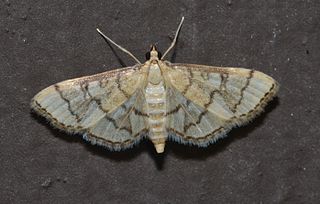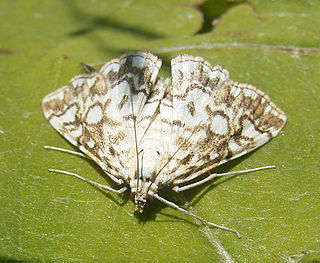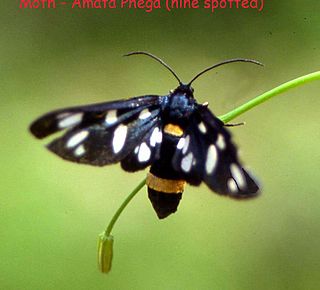
Amata is a genus of tiger moths in the family Erebidae. The genus was erected by Johan Christian Fabricius in 1807.
Anapisa is a genus of moths in the family Erebidae described by Sergius G. Kiriakoff in 1952.

Metarctia is a genus of moths in the family Erebidae and subfamily Arctiinae. The genus was erected by Francis Walker in 1855.

Blepharomastix is a genus of moths of the family Crambidae described by Julius Lederer in 1863.

Bradina is a genus of moths of the family Crambidae.

Glyphodes is a genus of moths of the family Crambidae described by Achille Guenée in 1854.
Piletocera is a genus of moths of the family Crambidae. The genus was first described by Julius Lederer in 1863.

Scoparia is a grass moth genus of subfamily Scopariinae. Some authors have assigned the synonymous taxon Sineudonia to the snout moth family (Pyralidae), where all grass moths were once also included, but this seems to be in error.

Acentropinae is a fairly small subfamily of the lepidopteran family Crambidae, the crambid snout moths. Species of this subfamily are exclusively found in wetlands and aquatic habitats.
Anapisa endoxantha is a moth of the family Erebidae. It was described by George Hampson in 1914. It is found in Uganda.

The Syntomini are a tribe of moths in the family Erebidae. The tribe was erected by Gottlieb August Wilhelm Herrich-Schäffer in 1846.








